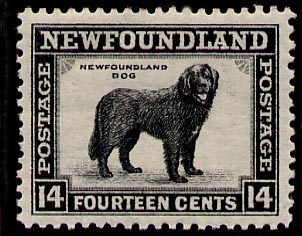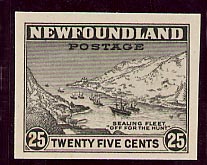
History

 |
Newfoundland History |
 |
Sealing and Whaling in Newfoundland
(to 1949)
[This text was written in 1949. For the full citation, see the end of the document. Links and the image have been added to the original text by Claude Bélanger. The history of Newfoundland sealing industry may be further explored by consulting this page.]
Sealing, once an important industry in Newfoundland, is now mainly of historic interest.
The hunt takes place, between March 14 and May 1, off the northern shores, during the northern migration of the hood and harp seals. The principal objects of the hunt are the young seals, which are valuable for their fat.
In the early days, winter residents caught seals with nets along the shores. Later, small boats were used in the hunt, and later still, sailing vessels. There are records of seal oil being exported as early as 1749. Between 1830 and 1860 the average annual catch was close to 440,000 seals, and in the spring of 1855 there were 400 vessels and 13,000 men engaged in the hunt. Steamships were first used in the hunt in 1863, and by 1880 had replaced the sailing vessels. In 1906 there were twenty-five steamers, in 1936 only eight, and in 1945 only two went to the ice for seals.
The decrease, apparently, is due to increasing costs and decreasing demand.

The seal-hunt, coming as it does in early spring, provides off-season employment for fishermen. Since sealing crews receive part of the catch, competition for a berth on a sealing vessel has been keen, and until the sealers' strike of 1902, crew members paid berth-money.
Since the hunt must take place among the ice-floes, and since there is never any certainty of finding seals, the industry has been a dangerous one for both crews and owners, and there have been many wrecks and other disasters.
Bibliography. The authoritative record of the Newfoundland seal fishery is Chafe's sealing book, a collection of annual reports made by L. G. Chafe (third edition edited by H M. Mosdell, St. John's, 1923). Other useful works are C. Michael, The seal and herring fisheries of Newfoundland (Montreal, 1873); A. Kean, - Old and young ahead (London, 1935); W. H. Greene, The wooden walls among the ice floes (London, 1933); R. A. Bartlett, Sealing saga of Newfoundland (National Geographic, July 1929); J. T. Callanan, The Newfoundland seal hunt in J. R. Smallwood (ed.), Book Newfoundland (St. John's, 1937), Meaney, Saga of sealing (Atlantic Guardian, 1945); J B. Jukes, Excursions in and about Newfoundland (London, 1842).
Whaling, an industry which lapsed in Newfoundland during the 1920's, shows signs of being revived. In 1946 there were two whaling plants in operation, one in Hawke's harbour, Labrador, and one at Williamsport, White bay. There were 529 whales taken during the year, and the total export value of the products was $950,000 or triple that of the previous year's catch.
Source: W. Stewart WALLACE, ed., The Encyclopedia of Canada . Newfoundland Supplement, Toronto, University Associates of Canada, 1949, 104p., pp. 96, 102.
© 2004 Claude Bélanger, Marianopolis College |